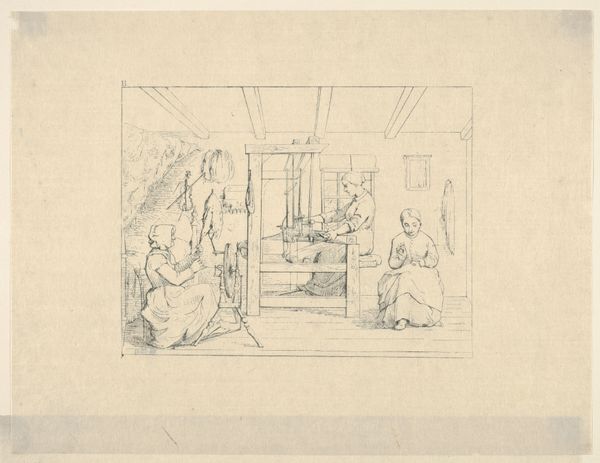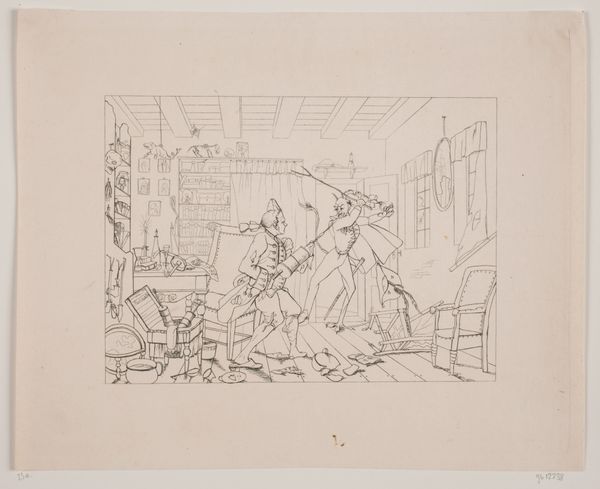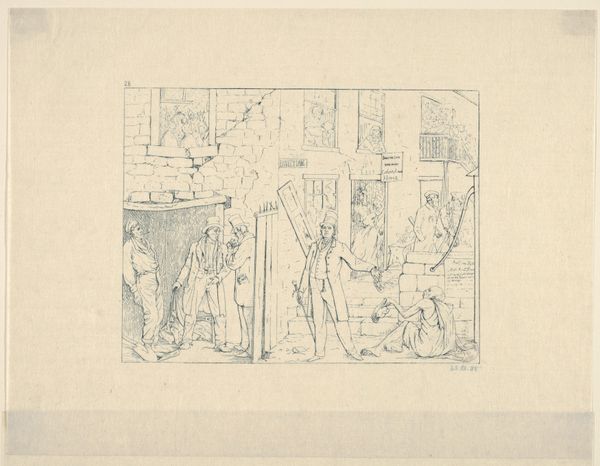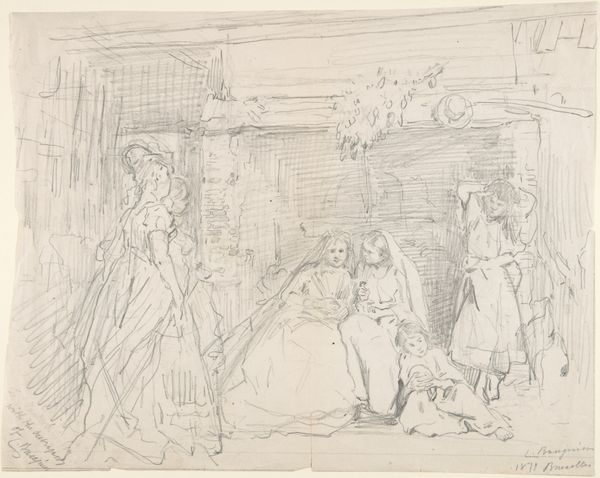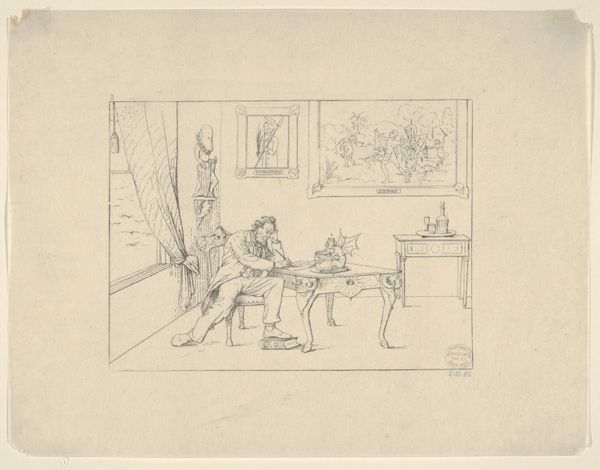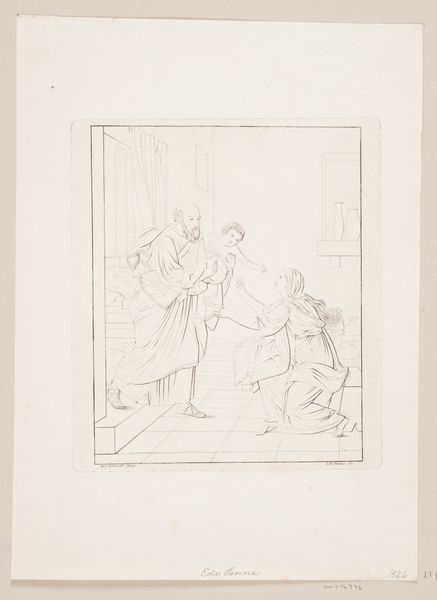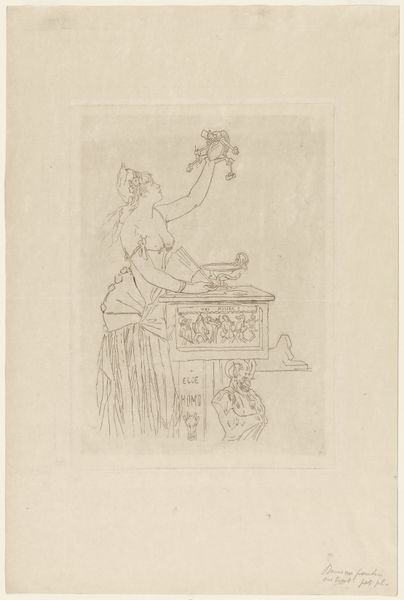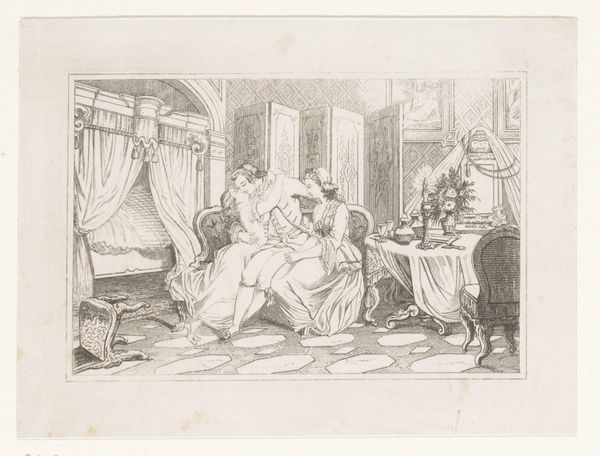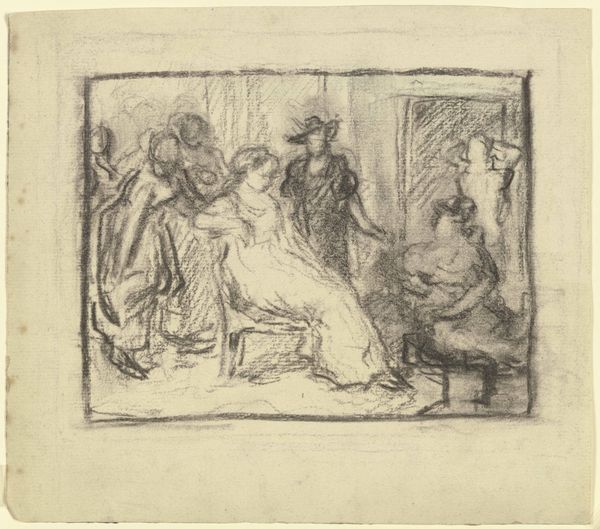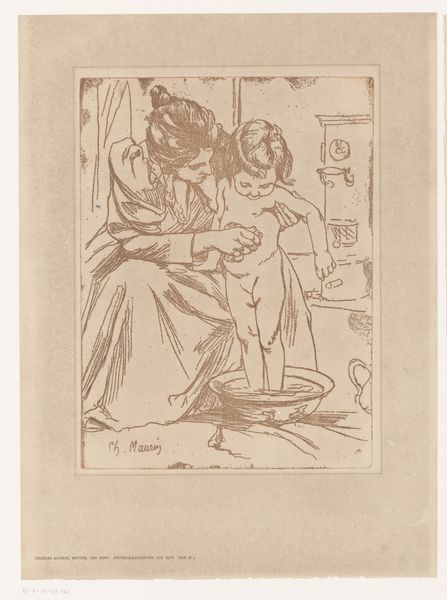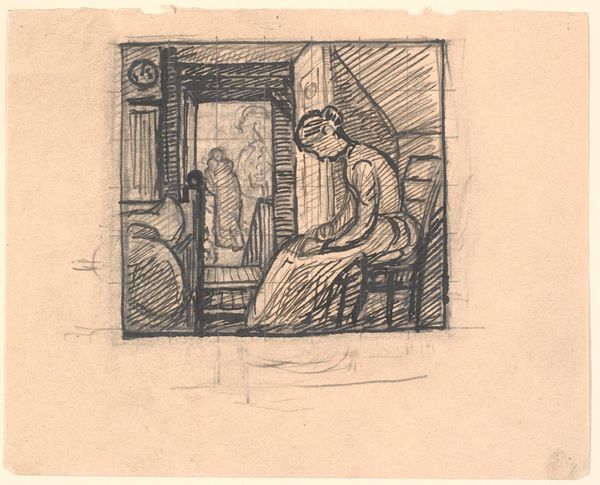
Cave Life in Vicksburg during the Seige (from Confederate War Etchings) 1861 - 1863
0:00
0:00
drawing, print, etching, engraving
#
drawing
#
narrative-art
# print
#
etching
#
landscape
#
genre-painting
#
history-painting
#
engraving
#
realism
Dimensions: Image: 4 1/2 x 6 in. (11.5 x 15.3 cm) Sheet: 7 13/16 x 10 3/8 in. (19.9 x 26.3 cm)
Copyright: Public Domain
Editor: This is "Cave Life in Vicksburg during the Seige" by Adalbert John Volck, created as an etching sometime between 1861 and 1863. The scene feels claustrophobic, the woman seems burdened with worry, her posture is so sad. What's the story behind this image, and how does it fit into the larger narrative of the Civil War? Curator: It's a powerful and intimate portrayal, isn't it? Volck, though sympathetic to the Confederate cause, provides here a glimpse into the everyday realities of siege warfare. This etching speaks to the disruption of domesticity, the sheer *public* endurance required of civilians, especially women, during wartime. Editor: Public endurance? I always thought of women's experiences during war as very private. Curator: Exactly, and that is what makes this image interesting. While women are often relegated to the domestic sphere, sieges make that private experience highly public. The “cave life” wasn't chosen, it was forced upon them by a brutal siege. Consider also the power dynamics at play. The South saw itself as preserving a particular social order; how does depicting the suffering of white women reinforce those values? Editor: So the etching serves as both a depiction of hardship and perhaps as propaganda for the Confederate cause? A way to garner support by showing who was suffering? Curator: Precisely. And beyond the political agenda, what message might it send about the public role of women? Was this used as a cautionary tale for Northern women? Perhaps both sides had to be involved in this horrible situation that forced women and children to take shelter like animals, devoiding their status and destroying societal structure. Editor: I see now. It's not just a scene of suffering, but a carefully constructed image intended to shape public opinion and bolster the Confederacy's narrative, using sympathy for white womanhood. Curator: Absolutely. Looking at art through that lens--considering its role in shaping perceptions and reinforcing social norms-- allows us to understand it as a historical artifact with potent political implications. Editor: Thank you for opening my eyes to how this image may reinforce existing structures. It gave me new appreciation.
Comments
No comments
Be the first to comment and join the conversation on the ultimate creative platform.

